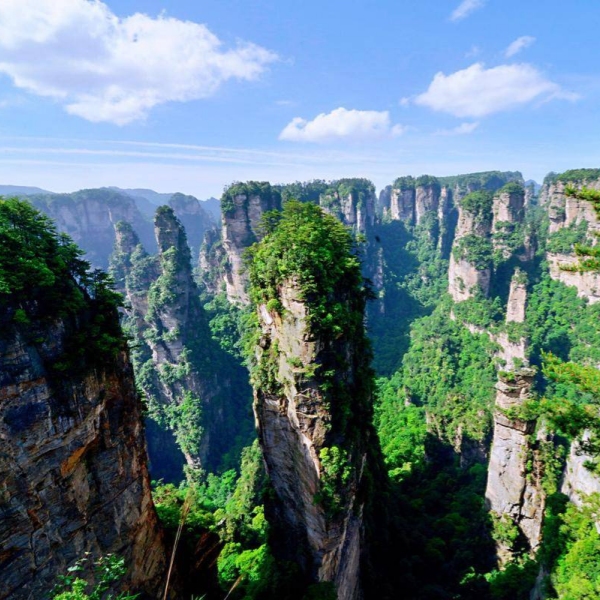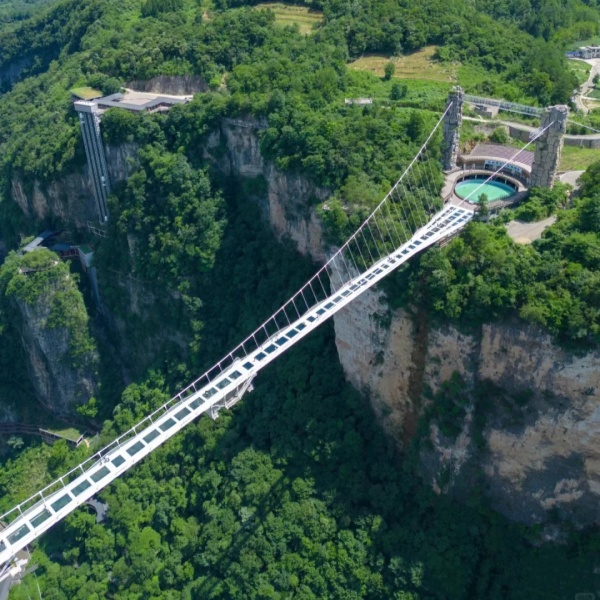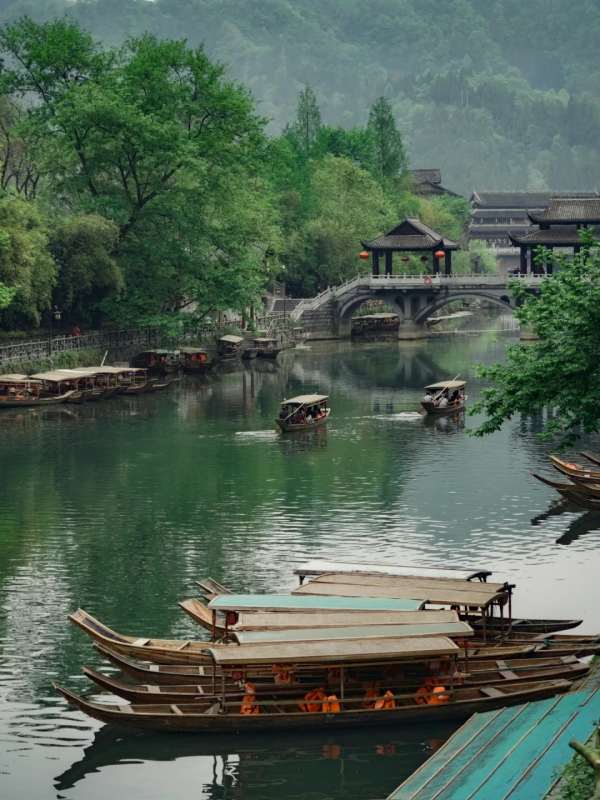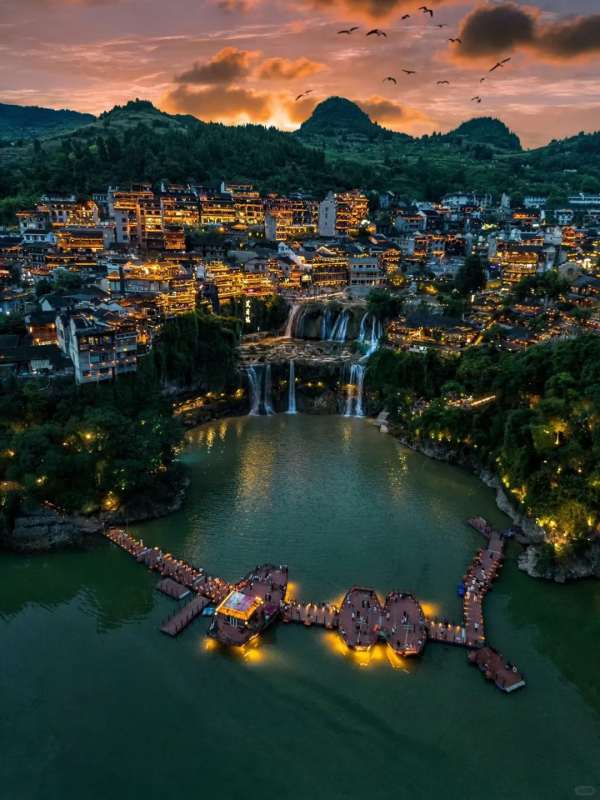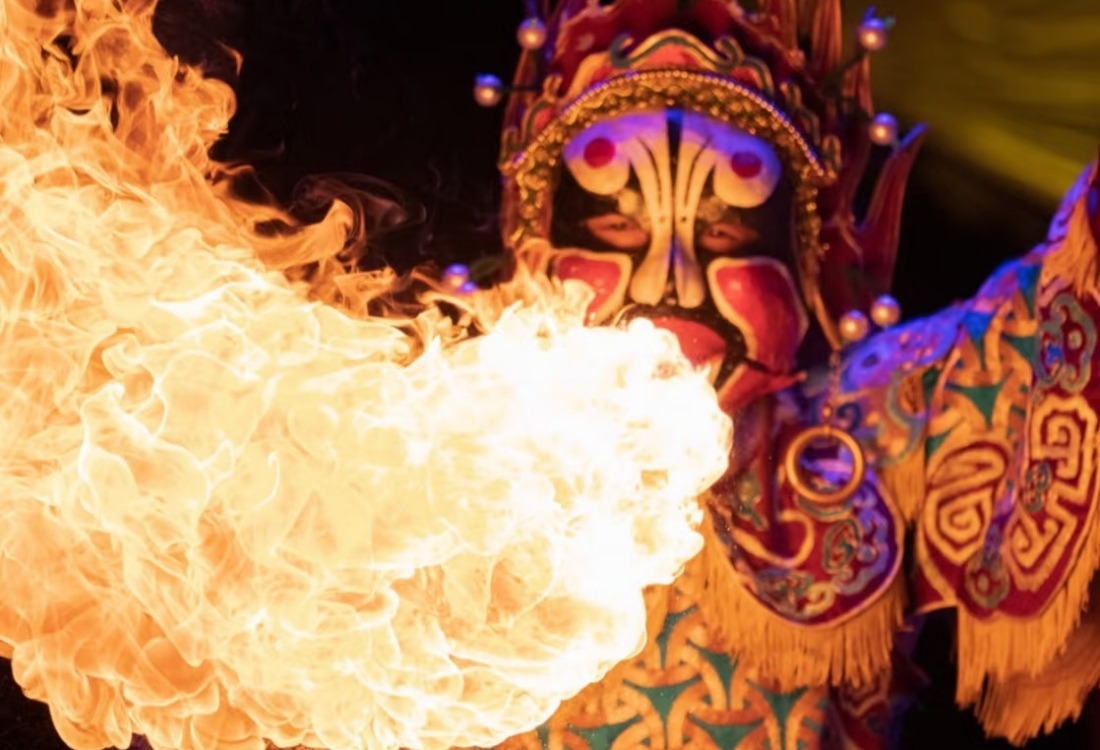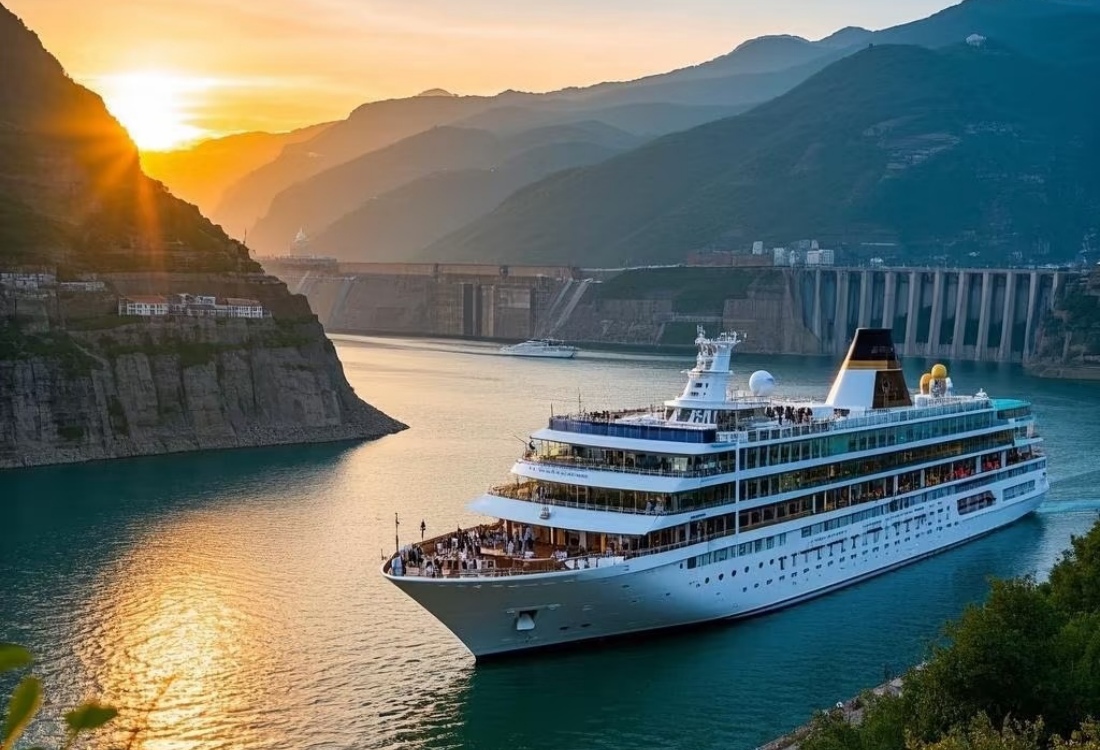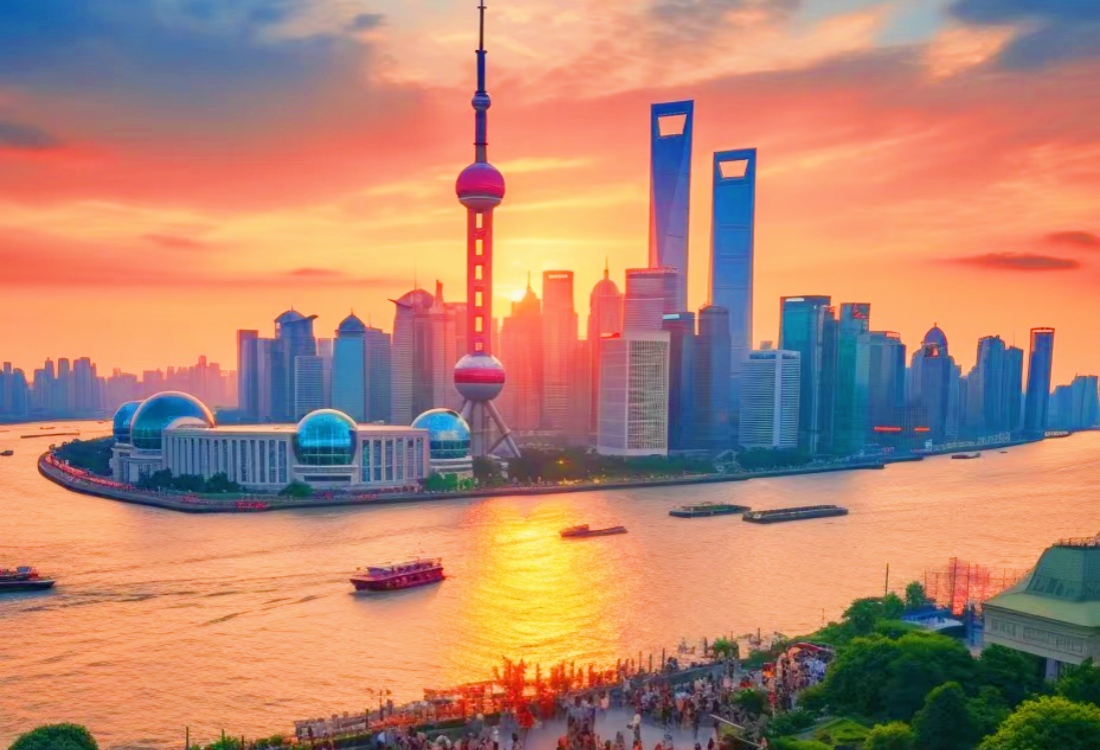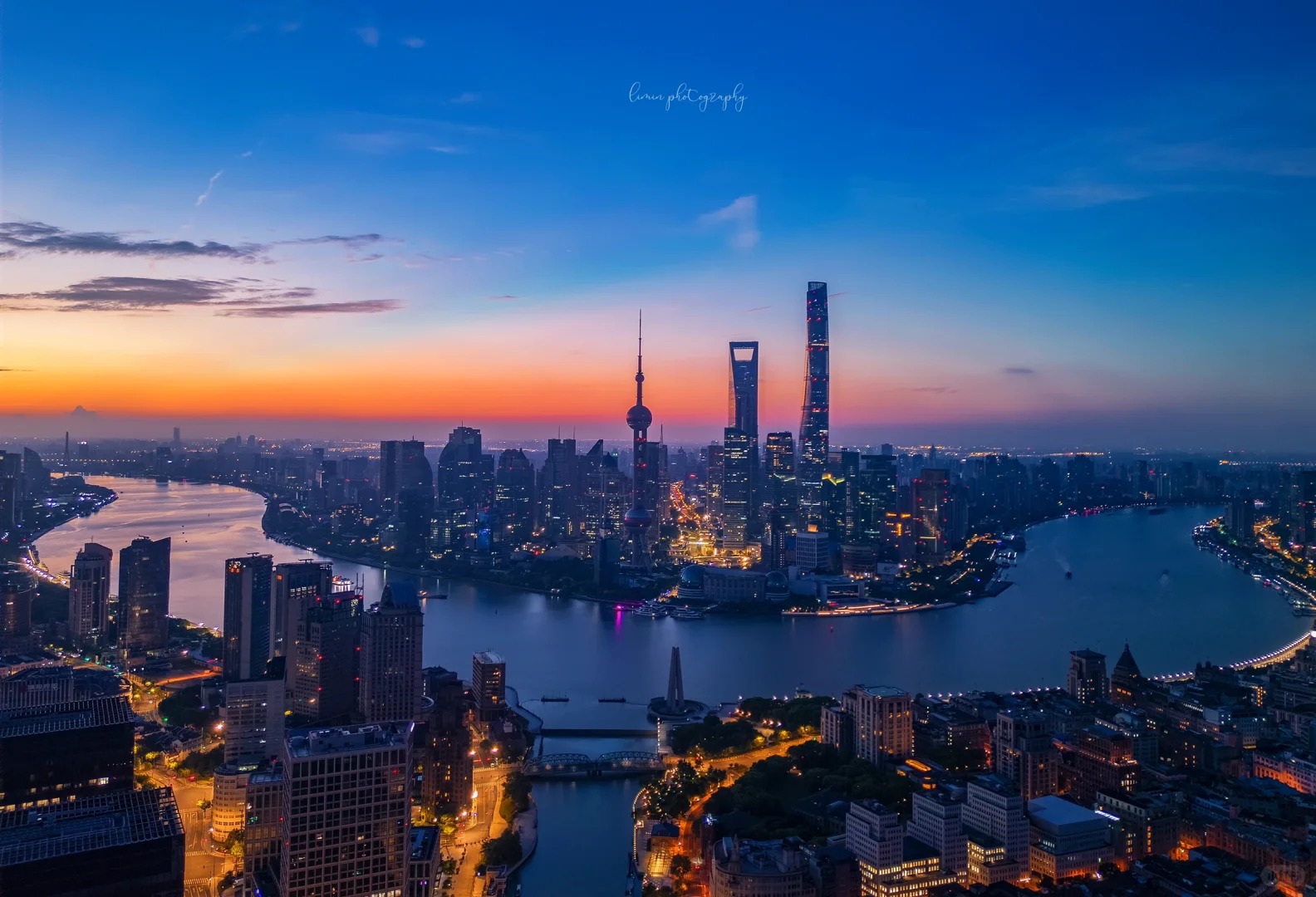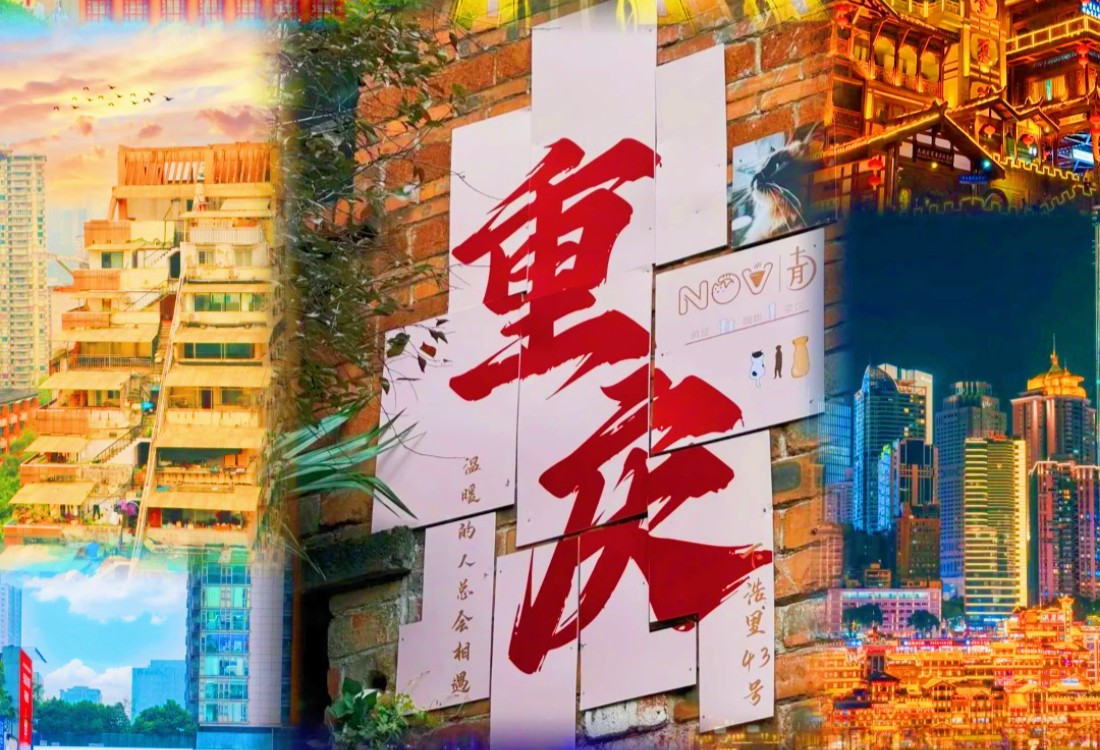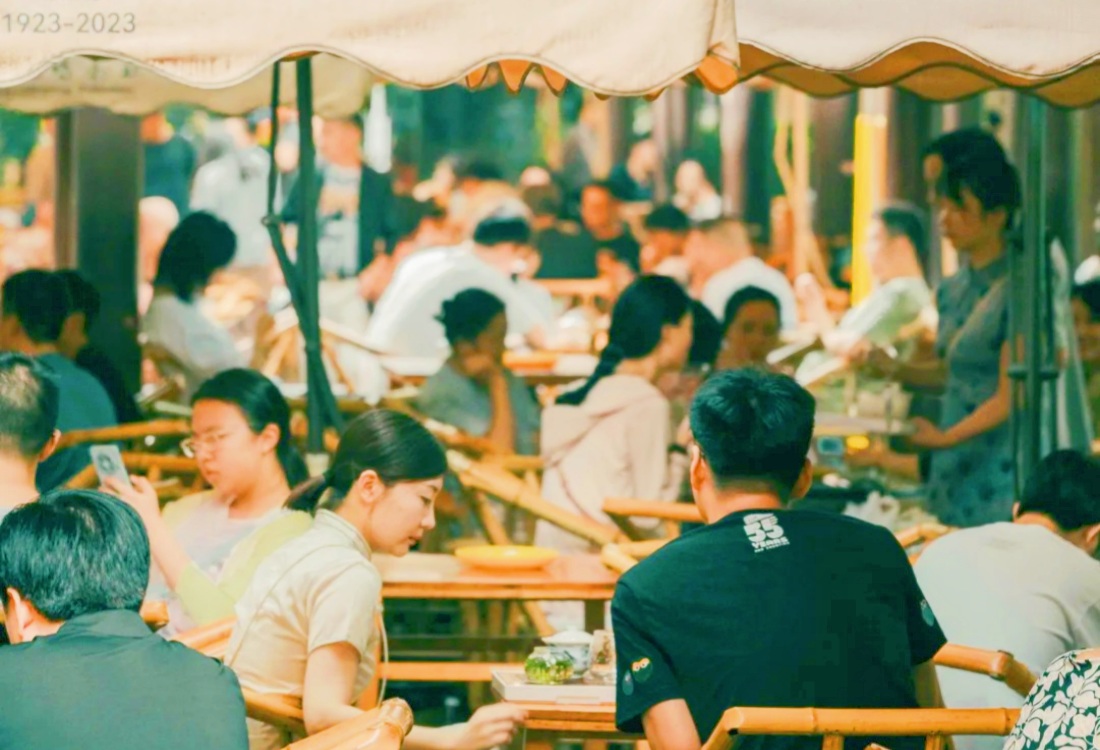Table of Contents
ToggleZhangjiajie, a stunning region in China’s Hunan Province, is a dream come true for nature lovers and adventure seekers. Famous for its sky-piercing sandstone pillars that inspired the floating mountains in the movie *Avatar*, this area offers much more than just incredible scenery. Get ready to explore a world of natural wonders, heart-pumping activities, and fascinating local culture. This guide will walk you through the top things to do & must-see attractions in Zhangjiajie, making it easy to plan an unforgettable trip.
1. Explore Zhangjiajie National Forest Park
Highlights:
See the Avatar Hallelujah Mountain, the real-life inspiration for the Avatar movie’s floating peaks.
Walk the Golden Whip Stream trail, a flat, family-friendly path with waterfalls and wild monkeys.
Ride the Bailong Elevator (glass elevator) for jaw-dropping views.
Tips:
Visit early to avoid crowds.
Wear sturdy shoes for hiking.
Buy a multi-day park pass to explore at your own pace.
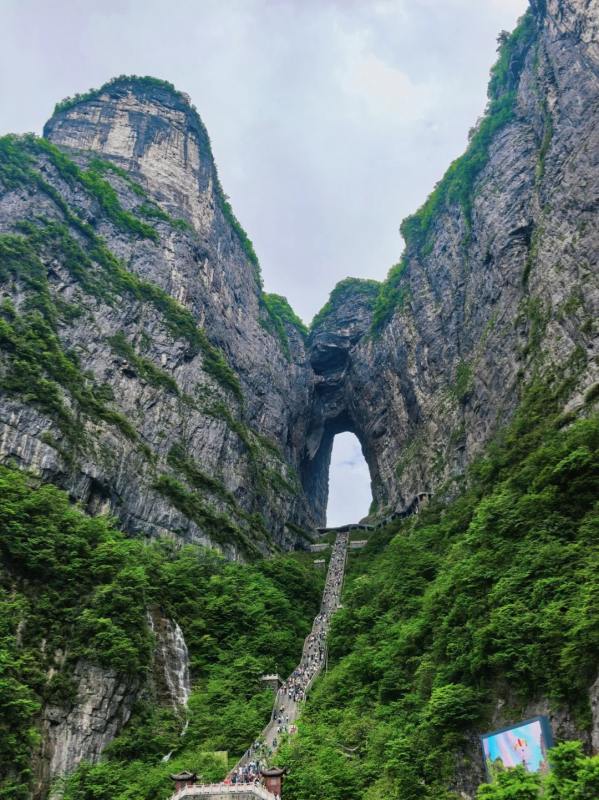
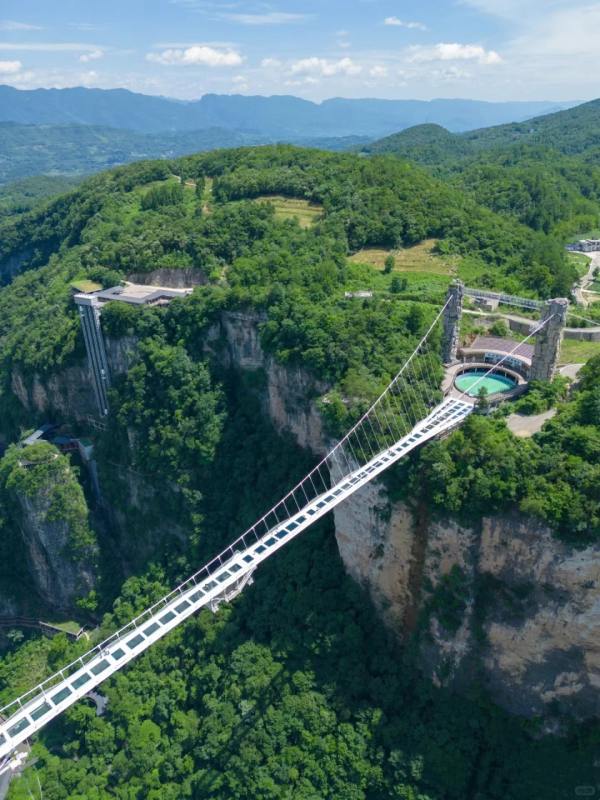
2. Walk Zhangjiajie Grand Canyon Glass Bridge
If you’re looking for a heart-pounding experience, head to the Zhangjiajie Grand Canyon, home to one of the world’s highest and longest glass-bottomed bridges. Suspended about 300 meters (984 feet) above the canyon floor and stretching 430 meters (1,410 feet) long, walking across this transparent marvel offers incredible (and perhaps slightly terrifying) views straight down. It’s a true test of courage! The bridge is generally open from 9 a.m. to 3:30 p.m.
Highlights:
Step onto the world’s longest glass bridge (1,400 feet high) at Zhangjiajie Grand Canyon.
Enjoy panoramic views of the canyon below your feet.
Tips:
Book in advance—it’s popular!
Avoid rainy days; the bridge may close for safety.
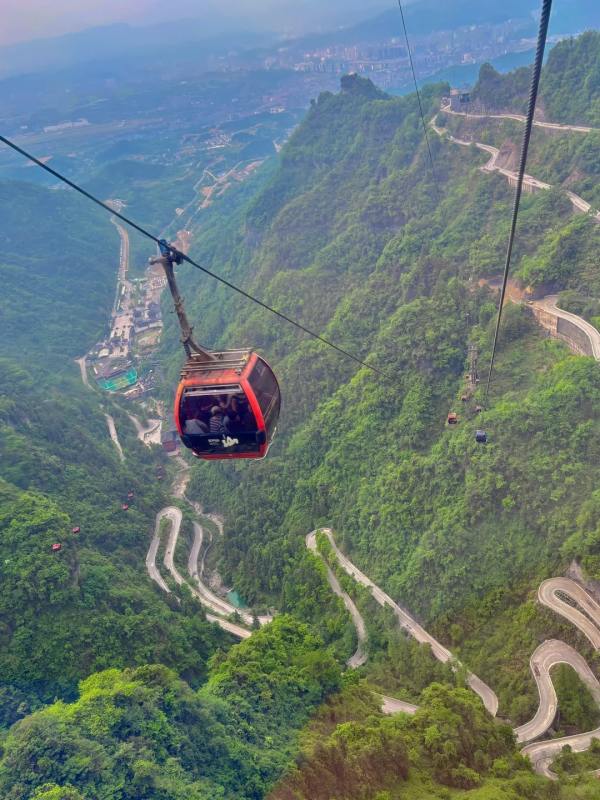
3. Visit Tianmen Mountain
Located just south of Zhangjiajie city (outside the main National Forest Park), Tianmen Mountain is a must-visit attraction, famous for its dramatic landscapes and the iconic Tianmen Cave. Getting here is an adventure in itself.
Highlights:
Ride the world’s longest cable car (4.3 miles) to the mountain’s peak.
Climb the 999-Step Stairway to reach Tianmen Cave (“Heaven’s Gate”), a massive natural arch.
Try the cliffside glass walkway for adrenaline-pumping views.
Tips:
Go on a clear day for the best visibility.
Pack snacks; food options at the top are limited.
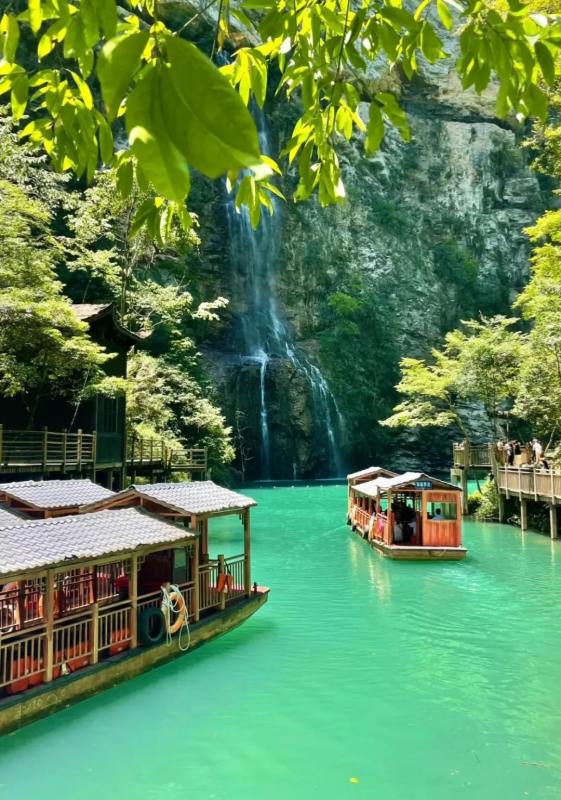
4. Take a Boat Ride on Baofeng Lake
Located at the Wulingyuan District of Zhangjiajie city, Baofeng Lake is a part of Wulingyuan Scenic and Historic Interest Area, the natural heritage of the world. It was initially a peaceful gorge and then locals built a reservoir to store water for irrigation. However, the reservoir shows such an unexpectable scenery now. It consists of over 20 scenic spots. With the clean water, various shaped stone hills, cute waterfall, etc, this lake attracts many tourists from home and abroad.
Highlights:
Glide across the lake’s turquoise water surrounded by green cliffs.
Listen to traditional songs performed by local boat rowers.
Tips:
Visit in the morning for calm waters and fewer tourists.
Bring a light jacket; it’s cooler near the water.
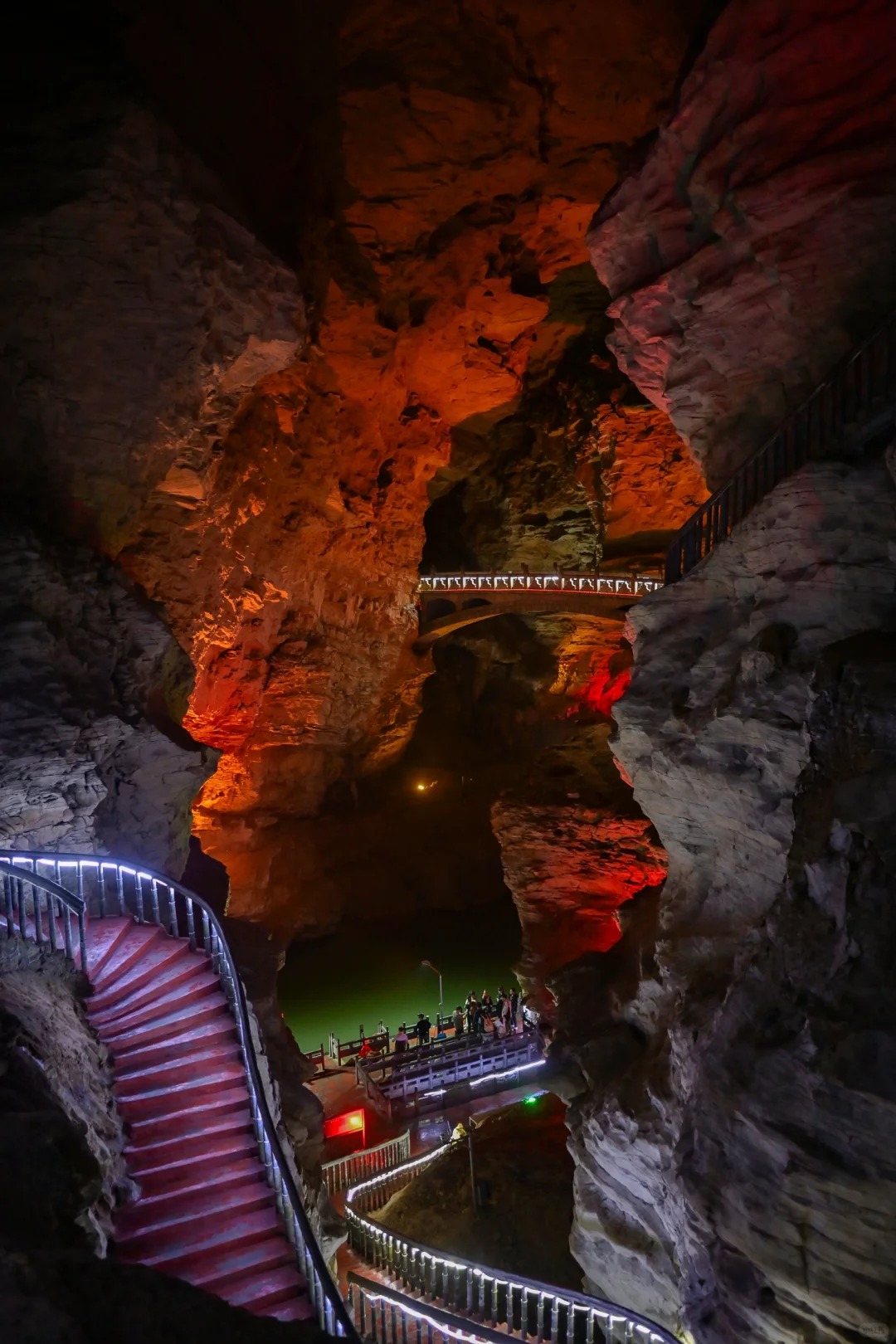
5. Explore Yellow Dragon Cave
Discover a different kind of natural beauty at the Yellow Dragon Cave (Huanglong Cave), one of the largest karst caves in China. This vast underground labyrinth is filled with impressive stalactites, stalagmites, stone curtains, and underground rivers. A guided tour typically involves walking and a short boat ride on one of the subterranean rivers. Colorful artificial lights illuminate the formations, creating a magical and sometimes surreal atmosphere.
Highlights:
Discover giant stalactites, underground rivers, and colorful light displays.
Take a boat ride inside the cave for a magical experience.
Tips:
Wear non-slip shoes—the cave paths can be wet.
Guided tours are available for deeper insights.
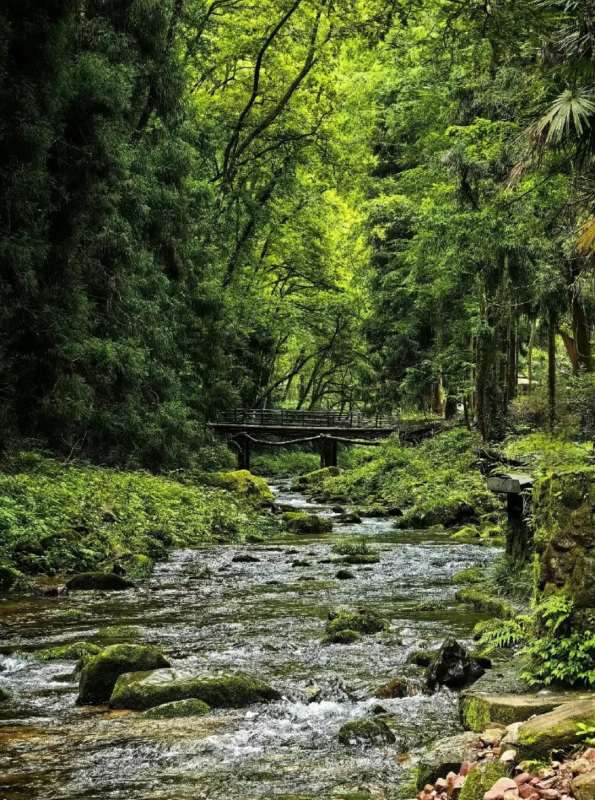
6. Hike Golden Whip Stream
Known as one of the most poetic streams in the world, the Golden Whip Stream offers a tranquil escape. This 7.5-kilometer (4.7-mile) path meanders through a lush valley, flanked by towering cliffs and verdant foliage. It’s an easy, mostly flat walk that takes about 2-3 hours, allowing you to admire crystal-clear water, peculiar rock formations like the Golden Whip Rock, and spot local wildlife, including monkeys and colorful birds. Remember to stay on the marked paths and observe wildlife from a respectful distance.
Highlights:
Follow a 4-mile trail along a crystal-clear stream.
Spot monkeys playing in the trees.
Tips:
Perfect for families and casual hikers.
Carry water and insect repellent.
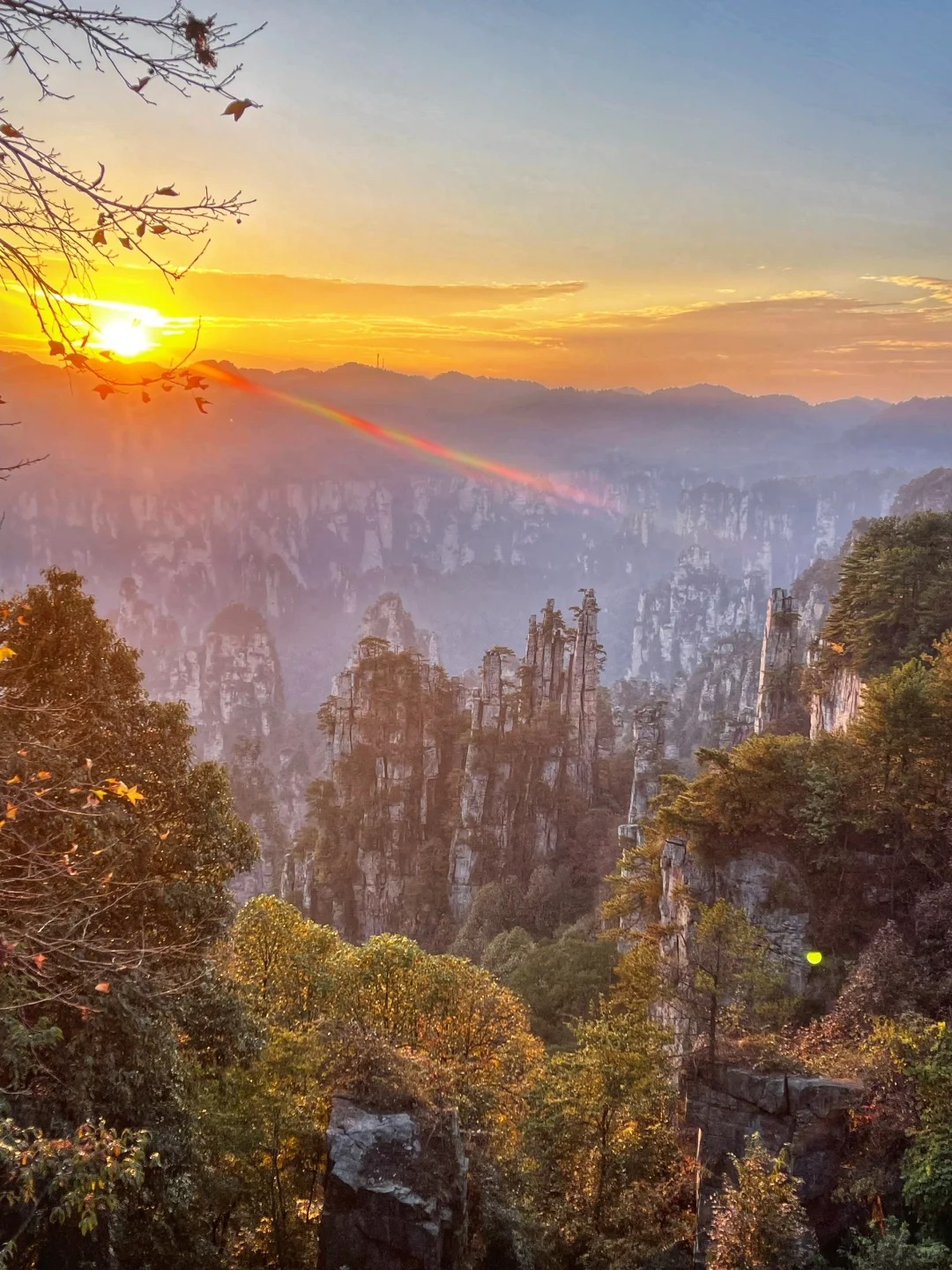
7. Tianzi Mountain – Emperor’s Peak Views
Tianzi Mountain offers some of the most spectacular panoramic views in Zhangjiajie National Forest Park. Named after a Tujia ethnic minority leader who called himself “Tianzi,” this area is famed for its sea of clouds, jagged peaks, and stunning sunrises.
You can reach the viewpoints via a cable car or by hiking. The scenery here changes dramatically with the seasons, each offering a unique charm.
Highlights:
Capture stunning photos as the sun turns the mountains golden.
Enjoy quiet moments in nature.
Tips:
Arrive 1 hour before sunset for the best spot.
Bring a tripod for steady photos.
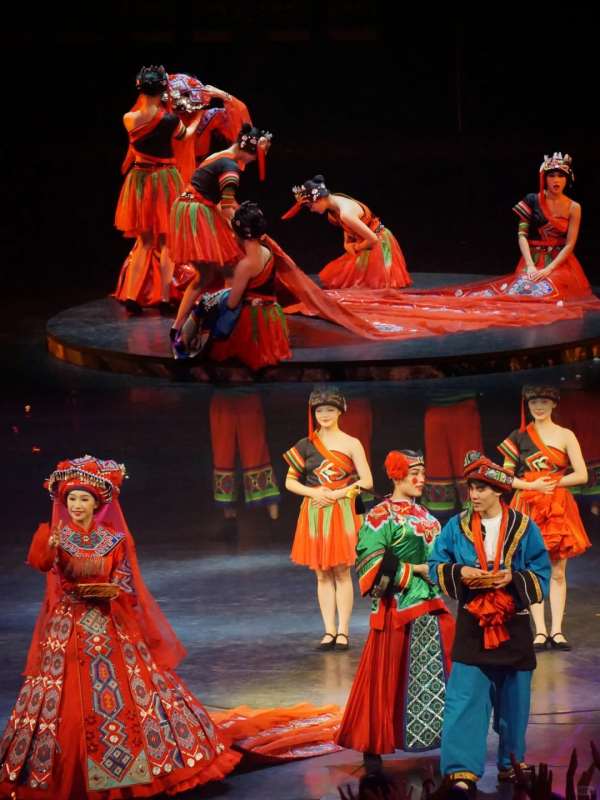
8. Cultural Encounters: The Traditions of Zhangjiajie
Zhangjiajie is not just about natural landscapes; it’s also home to rich ethnic cultures, primarily the Tujia and Miao minority groups. Immerse yourself in their traditions for a more complete Zhangjiajie experience.
Tujia and Miao Ethnic Minority Culture
Take the opportunity to learn about the unique customs, architecture, and lifestyles of the Tujia and Miao peoples. You can often find their distinctive handicrafts, such as intricate embroidery, silverware, and batik fabrics, in local markets and shops. Some visitors enjoy renting traditional costumes for memorable photos.
“Charming Xiangxi” Cultural Show
One of the best ways to experience the local culture is by attending the “Charming Xiangxi” show. This vibrant performance features traditional folk songs, dances, and acrobatic displays that showcase the history and legends of the Tujia and Miao communities in Western Hunan (Xiangxi). It’s an entertaining and insightful look into the region’s cultural heritage.
9. Exploring Ancient Towns Near Zhangjiajie
Extend your journey beyond the mountains and explore some of the charming ancient towns located a few hours’ drive from Zhangjiajie. These offer a glimpse into China’s historical past and a different pace of life.
Fenghuang Ancient Town (Phoenix Ancient Town)
Dating back to 1704, Fenghuang Ancient Town is renowned for its well-preserved traditional wooden houses (Diaojiaolou) built on stilts along the Tuojiang River, old stone bridges, and narrow alleyways. It’s incredibly picturesque, especially at night when the town is illuminated by lanterns, creating a magical atmosphere. While entry to the town itself is often free, some specific attractions within it may charge fees. It’s a great place for a leisurely stroll, photography, and trying local snacks.
Furong Ancient Town (Hibiscus Town)
Furong Ancient Town, also known as the “Millennium Town Hanging on a Waterfall,” is famous for its stunning waterfalls that cascade right through the town center. You can even walk behind the main waterfall into a natural cave. The town’s Tujia architecture and flagstone streets add to its charm. It’s particularly beautiful during the rainy season (June to August) when the waterfalls are at their most powerful. Like Fenghuang, Furong is especially captivating at night when lit up.
Frequently Asked Questions (FAQ)
What's the best time of year to visit Zhangjiajie?
The best times to visit Zhangjiajie are during spring (April to May) and autumn (September to October). During these seasons, the weather is generally pleasant, with comfortable temperatures and less rainfall, making it ideal for hiking and sightseeing. Summer (June to August) can be hot and rainy, and it’s also peak tourist season, meaning more crowds. Winter (November to February) can be cold, with potential ice and snow, but offers a unique, quieter beauty with fewer tourists.
How many days should I plan for a trip to Zhangjiajie?
To fully experience the main attractions, it’s recommended to plan for at least 3 to 4 days in Zhangjiajie. This allows enough time to explore Zhangjiajie National Forest Park (which itself can take 2-3 days), Tianmen Mountain, and perhaps the Glass Bridge or Yellow Dragon Cave. If you also want to visit nearby ancient towns like Fenghuang or Furong, you’ll need an extra day or two.
What should I pack for Zhangjiajie?
Comfortable walking shoes are essential, as you’ll be doing a lot of walking and hiking. Pack layered clothing, as temperatures can vary, especially at different altitudes and times of day. Rain gear (poncho or umbrella) is advisable, as weather can be unpredictable. Sunscreen, a hat, and sunglasses are important for sunny days. Bring a reusable water bottle to stay hydrated. If visiting in cooler months, pack warm clothing, including gloves and a hat.


